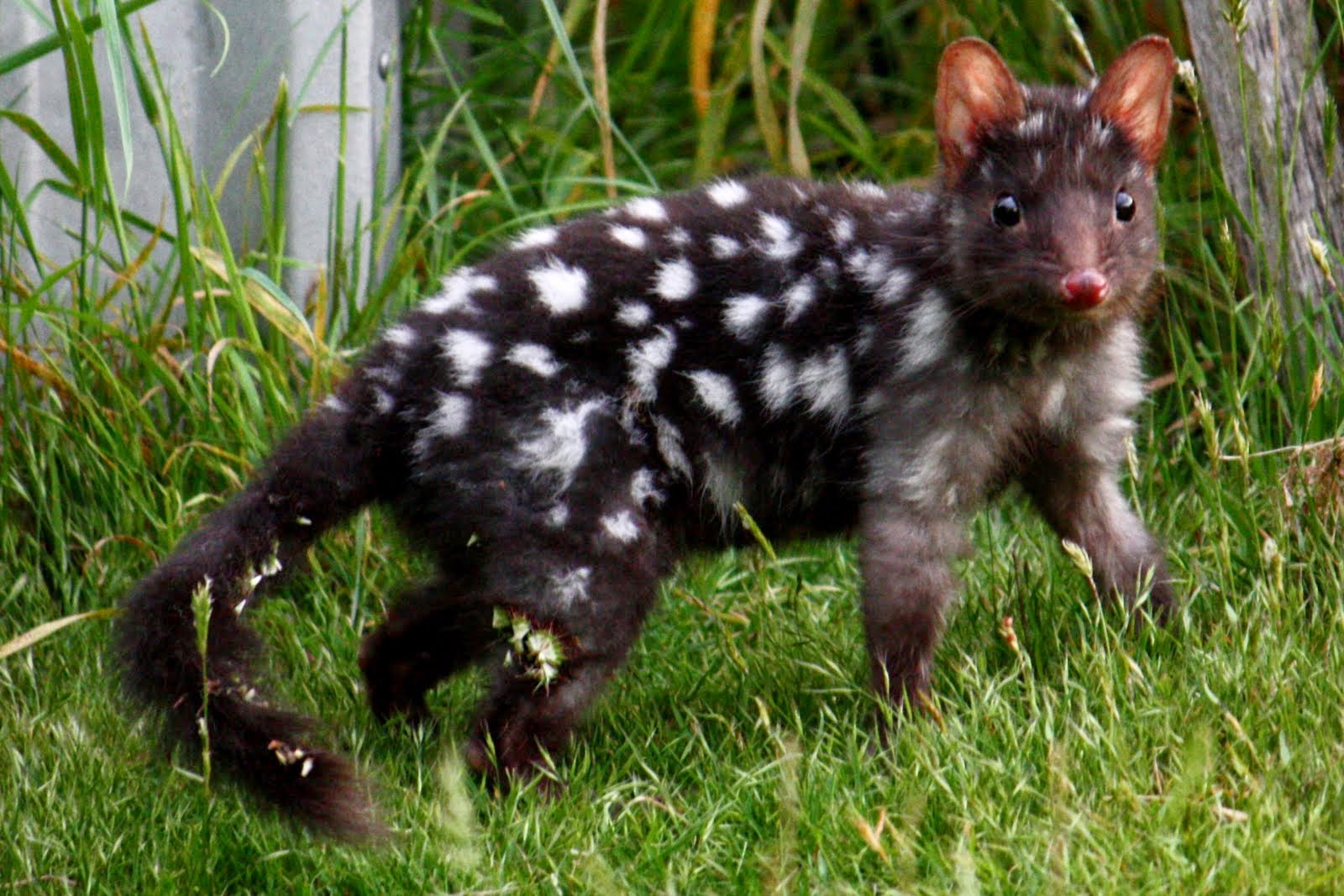 |
| Eastern Quoll |
The classic marsupials for which Australia is famous are the kangaroos, wombats, and the Koala, all of which are vegetarian, but Australia and the nearby islands of Tasmania and New Guinea also have a wide variety of native carnivores, many of which are threatened as a result of introduced placental carnivores such as foxes and the domestic cat, which both compete with them and prey on them. The Eastern Quoll is one of six surviving species of Dasyurus, which collectively range from rain forests in New Guinea south to temperate woodland and pasture in Tasmania.
Although the Eastern Quoll was formerly found on the
mainland of south east Australia, today they are only known from Tasmania,
aside possibly a few animals descended from escaped captive animals. Although
they will quite happily use pastureland, which provide plentiful insect prey
and grubs, feral cats are a major threat. The problem has possibly been made
worse in recent years as a result of disease among the Tasmanian Devil
population, which formerly probably killed many cats and restricted their use
of the countryside. With fewer Devils, the cats can expand their range and
activity period, resulting in more predation and competition with the Quolls.
Eastern Quolls are primarily carnivores, preying on insects,
small mammals, reptiles, and frogs, but they will also east some fruit at some
times of the year. The home range of a Quoll no doubt varies with prey
availability, but in Tasmania at least is around 35ha for females, somewhat
larger for males, especially during the breeding season. They are nocturnal,
spending the daylight hours in simple burrows, rock crevices, or hollow trees.
They can climb, but mostly forage on the ground and have been known to dig
after baits set for foxes.
Breeding takes place in the winter months, with a pregnancy
of 19-24 days. Although litters of young (each around the size of a grain of
rice) are large, only the first six to reach the females six teats survive.
Although the female has a pouch, it consists only of folds of skin next to the
teats so actual physical protection of the young is small. The young are
independent at around 6 months, after which time they live solitary lives.
(Image from Wikipedia)
Amazing! Let me see which animals beginning with Q live in Europe now! Quail, Quetzal, Quoll! Next things Quetzals at the living rainforest, Berkshire?
ReplyDelete